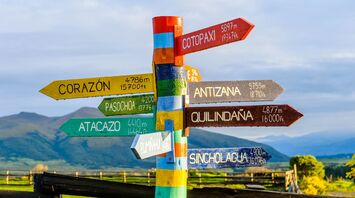A Spotlight on Ecuador's Age-Old Relationship with the Sun

The name ‘Ecuador’ derives from the Spanish word for ‘equator,’ reflecting the country's position where the sun is at its highest. This intense sunlight supports not only food crops but also other sacred and endemic species. Explore how the sun shapes Ecuador's culture and environment today.
Inti Raymi: Festival of the Sun
The Inca sun god, Inti, was revered for providing warmth and light necessary for crops and life. Modern-day Ecuadorians celebrate this connection through the Festival of the Sun, or Inti Raymi. In June, Indigenous communities across the Andes, from Pichincha to Imbabura, perform ceremonial bathing rituals in rivers and springs to cleanse negative energies and renew their spirits. The largest celebration takes place in Otavalo on June 21, featuring dances, offerings, and maize-based foods in gratitude for a bountiful harvest.
The Power of Palo Santo
Along Ecuador’s coast, the palo santo tree thrives under the intense sun, growing up to 60 feet tall and living for 200 years. When the tree dies, its wood can be used to produce fragrant, citrus-like incense after maturing for five to eight years. This sacred wood is integral to spiritual ceremonies, including Inti Raymi, and is used for smudging to ward off evil spirits. Spanish colonists adopted palo santo in Catholic rites, and today, its scent can be found in Quito and Baños, from church doorways to bars like Casa Gangotena. Along the coast, hotels like Hotel del Parque use it to repel mosquitoes and bad energies.
Sunlit Wildlife Habitats
The Galápagos Islands, with their unique species such as marine iguanas, benefit greatly from the sun. These iguanas bask in the sun's warmth before diving into the ocean to feed. The Amazon rainforest, rich in chlorophyll, supports a vast array of plant and animal life due to its sunlight absorption. The Galápagos marine ecosystem depends on chlorophyll-rich phytoplankton, thriving in the cool waters brought by the Humboldt Current. These tiny organisms form the base of the food chain, supporting diverse marine life, including green turtles, manta rays, and hammerhead sharks.
Solar-Powered Achuar Boats
The Indigenous Achuar people of the Amazon have utilized solar energy innovatively. In collaboration with engineers, the non-profit Kara Solar launched solar-powered boats to replace costly, environmentally damaging petrol-powered canoes. These boats serve nine communities, transporting children to school, goods to market, and monitoring illegal logging activities. Travelers can experience this sustainable lifestyle at Kapawi Ecolodge, offering local-led excursions and cultural immersion.
Sunlit Andean Rose Farms
In the Andes, sunlight plays a crucial role in Ecuador’s economy. Pichincha province is known for its rose farms, where flowers grow tall and vibrant under the sun. Ecuador is the third-largest exporter of roses, contributing 10% to its GDP. Visitors can tour farms like Hacienda La Compañía to see the cultivation process. The combination of intense sunlight, mild climate, and rich volcanic soil produces roses with long stems and large heads, making them ideal for floral arrangements.
Ecuador's relationship with the sun, from ancient traditions to modern innovations, continues to shape its culture and environment. Whether through festivals, agriculture, or wildlife conservation, the sun remains a vital force in Ecuadorian life.



















